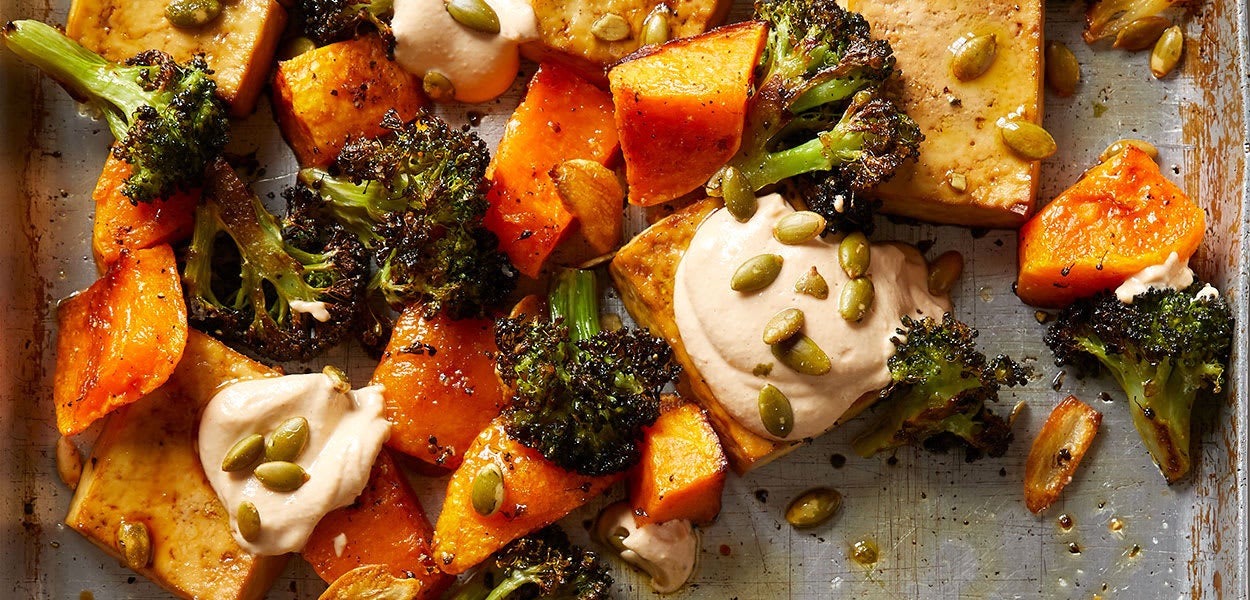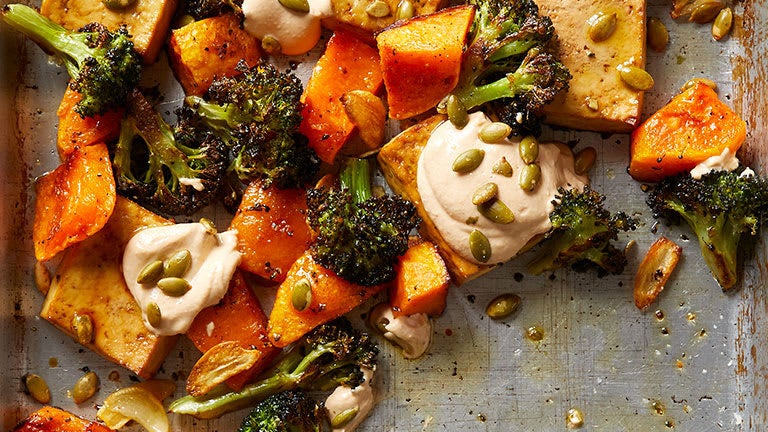5 cooking hacks to make you a sheet pan meal master


Using sheet pans to cook an entire meal isn't only simple—it's time-saving. Think about it: Plopping everything you're serving for dinner on one pan that you can set and forget in the oven frees up all that time you'd typically spend preparing multiple dishes. Bonus? It leaves you without extra pots to scrub. These tips will help you win your sheet pan game:
1. Go big.
A standard professional-size (13 x 18-inch) aluminum baking sheet works best for sheet pan meals. Anything smaller, and the overcrowded ingredients may steam instead of brown. If you have only smaller pans, you can divide your recipe between two pans. Rule of thumb: It's always better to spread out ingredients too much rather than too little.
2. Size ingredients according to their cook time.
If you have a quick-cooking vegetable (like kale) on the same tray as a veggie that tends to require more cooking time (like carrots), cut the fast-cooking one into larger chunks and the longer-cooking one into smaller pieces. This way, everything will be ready around the same time and nothing will burn or come out way undercooked.
3. Consider pan color.
Darker pans brown food faster than lighter ones do. So if your pans are dark metal, keep an eye on how quickly your food is cooking.
4. Tweak oven heat if ingredients are browning too quickly.
While caramel coloring can indicate an item is done cooking, too-high oven temps can lead to premature browning without fully cooking items through. If your sheet pan meal appears to be browning too fast, just lower the oven temperature by 10⁰F to slow things down.
5. Make more than you need.
One of the best perks of one pan dinners? Leftovers you can eat tomorrow for lunch! Double or triple portions so you've got extras to pack away.
4 delectable sheet pan recipes to guarantee you win dinner
Just add wine
A good glass can elevate a weeknight meal to dinner party fare. All of these recipes pair well with a variety of wines, especially these whites:
- Pinot Gris. Nice acidity, so it goes with everything, especially fish, chicken, and vegetables.
- Riesling. Fruity, bright, but not necessarily sweet, this wine is great with boldly flavored foods.
- Chenin Blanc. Fresh and fruity, try it with pork, chicken, or fish.
- Sauvignon Blanc. Herbal, tart, and citrusy, it holds its own with strong flavors.